
- Envelope
- Facade
- Window
- Roof
- Solar protection
- Protection and balustrade
- Energy
Envelope in detail
Envelope
The envelope of a building is a part of the building which separates the heated volume from the outside environment.
Its primary function is to protect its occupants against external aggressions (climate and noise). Its performance is measured, on the one hand, by its capacity to manage the internal and external passive contributions and, on the other hand, by the level of comfort felt by its users. The feeling of comfort is often reflected by thermal, acoustic, optical and sanitary criteria. By performing an energy audit and a BlowerDoor test, it is then possible to improve the energy performance of a building. BIFF facade engineers provide you with observations and analyses to reduce your energy consumption.
The envelope also plays a structural role and reflects an aesthetic will of its designers.
The envelope of a building includes:
> Facades (walls and windows)
> The canopies
> The roofs
> The slabs and walls of the basement
The SIA 180 standard states that, in principle, the thermal envelope of the building, which surrounds the heated space, must be as airtight as possible (the ventilation openings being closed). The supply of outside air necessary for the renewal of stale indoor air is made possible by the manual opening of windows, through controlled ventilation openings or by a mechanical ventilation system.
To ensure a good quality of the indoor environment and the thermal comfort of the occupants of a building, passive measures and active measures can be put in place.
> Passive measures are architectural and constructive measures of thermal protection such as the thermal insulation of the envelope, the thermal inertia of the components of the adapted envelope, the solar protections, the internal inputs, the passive solar heating and the passive cooling. The layout of the premises also plays an important role in the quality of comfort. The hot and cold strategies are illustrated below.

The envelope must therefore be able to manage the internal and external passive contributions.
Today, the quality of envelopes for new buildings or buildings affected by a transformation or a change of use is regulated. The thermal performance requirements of the envelope derived from SIA 380/1 serve as a basis for energy requirements in cantons.
Envelope in detail
Facade
A facade is the outer face of a building or the set of faces that we see globally from the outside. The facade designates both the actual construction and the plan projection at the project stage, called "elevation". Facade engineering consists of making observations and analyses in order to improve the energy performance of a building thanks to a thermal balance and a BlowerDoor test.
Defining the types of facades can lead to discussion. By limiting ourselves to modern constructions, we distinguish two main types of facades:
- masonry facades called "heavy": they are defined as constructions consisting of walls and bays (embrasures) including the elements of filling (windows and external solar protection, doors, etc.), of hors-d'oeuvre (balconies, porch, awnings) and ornaments (balustrade, etc.). This type of facade essentially includes masonry or concrete facades including stone walls, bricks, etc., to reinforced concrete.
- so-called "light" facades: they are defined as facades built on a building framework with low mass, industrial materials, as opposed to traditional masonry or concrete construction.
The types of facades mentioned above are the most common. Other types of facade, more specific, exist. Among the most widespread are the heavy facade to be clad ("heavy" wall and "light" exterior face) and prefabricated facades (heavy, light modules or components).
The so-called light facades are the most complex. The most common type is the curtain wall. The light facades make it possible to implement a wide range of materials and to create architectural compositions tailored to different thicknesses. They take up wind loads without taking overloads related to the structure of the buildings. In addition, they are lightweight, which offers an advantage in terms of implementation or load on the structures. However, insulation and thermal inertia are still poorly controlled today.
A light curtain wall consists of several elements. Below is a list of the main components:

| 1 | Anchorage | : | Fixing part of the supporting elements of the light facade. |
| 2 | Mullion | : | Fixed main vertical element which will constitute the main structure of the facade. |
| 3 | Transom | : | Fixed main horizontal element which will constitute the main structure of the facade. |
| 4 | Upper transom | : | Horizontal fixed element of element termination or facade. |
| 5 | T-fitting | : | Connection between the mullion and the transom. |
| 6 | Inner seal | : | Usually an EPDM inner seal between the fixed frame and the filling. |
| 7 | Glass support | : | Element located at both ends of the glasses to support its weight. |
| 8 | Female connector | : | Element present in some systems to receive a mechanical fixation. |
| 9 | Thermal break | : | Barrette usually polyamide cutting thermal bridges. |
| 10 | Male fitting | : | Element present in some systems to transmit the forces of a mechanical fixation. |
| 11 | Fixing element | : | Element present in some systems to fix the filling and transmit the loads to the structure. |
| 12 | Pressure seal | : | Outer seal usually EPDM located between the pressure and the filling. |
| 13 | Pressure plates | : | Element that fixes the filling against the wind load and protects the joints between glasses. |
| 14 | Cover | : | Aesthetic element that covers the pressure. |
| 15 | Filling vision | : | Filler panel installed in viewing area. |
| 16 | Opaque filling | : | Filler panel installed in an opaque area, normally in front of the slab. |
Because of the large number of options and possible design configurations, the light facade can be classified according to several criteria. Two or three of these criteria must be specified in order to be able to describe in a basic way the appropriate type of solution. The main criteria are:
- According to the type of construction of the network:
- The curtain-wall standard: The entire "curtain-wall" system is mounted on site with filling elements (panels and glass).
- The unitized curtain-wall: the elements of facades are prefabricated in the factory (frames + panels + glasses + etc ...) and placed on the site in a single element (of one or two floors).
- According to the type of fastening of the fillings (usually glass):
- The facades standards: the glass is fixed with pressure plates and covers.
- The facades structural glazing: the glass is fixed with a bonding medium (structural silicone or other), and the vision from the outside is a glass without profile.
- The facades spiders: the glass is fixed with point fixing elements, in principle near the corners, without the need to install continuous profiles behind the glass.
- According to the type of envelope:
- Simple skin: the facade is composed of a single skin usually waterproof.
- Double skin: the facade is composed of two skins, usually the first is waterproof and the outer skin is ventilated. The inner wall is more massive and able to accumulate heat.
- According to the form:
- Right: conventional facade of buildings of rectangular plan.
- Polygonal: facade with profiles (usually horizontal) that follow a polygonal trajectory.
- Curved: facade with profiles (usually horizontal) curved to follow a curvilinear shape with glasses that follow this line.
- Inclined: non-vertical facade.
- 3D: Facade of complex geometry that must be treated with 3D software during its design and implementation.
- According to the material used for main structure:
- Aluminium
- Steel
- Wood
- Glass
- Mixed
- According to the additional performance requested:
- Fire-stop: facade capable of meeting the specific demands of fire resistance in terms of time, stability and insulation.
- Acoustics: facade with joint system, rooms, glasses, etc. which make it possible to obtain an acoustic improvement.
- Anti-bomb: reinforced facade, provided with specific glass fixings to resist unexpected overpressures.
- According to the operating principle:
- Standard: classic closed facade with variable water and airtight performance.
- Ventilated: facade with open cladding joints to prevent overheating of the cladding layer through ventilation, air flowing between the insulation and the cladding.
- Breathable: air gap between two windows in communication with the outside to maintain a ventilated air cushion between two windows.
In addition, the types of materials used to fill the facade are numerous: glass, stone, composite panels, sandwich panels, metal sheets, prefabricated panels, GRC, canvases, etc.
Envelope in detail
Window
The window is a frame with a glazed closure, practiced in a facade of a building to allow the entry of light, the vision to the outside and, usually, ventilation.
Among the components of a facade, the windows play a vital role in that they bring natural light into rooms and can be used for natural ventilation. To make them energy efficient, our facade engineers carry out an energy audit and a BlowerDoor test to draw up observations and analyzes to improve the energy performance of a building.
A window system may consist of several elements in various configurations. Below is a list of the main components of a window:

| 1 | Fixed frame | : | Fixed part of the window sealed to the masonry | |
| 2 | Window frame | : | Fixed or opening window element essentially consisting of a frame receiving a glazed, screened, solid or blinds | |
| 3 | Sash | : | Opening part of the doors or windows in the French opening or in the English opening. | |
| 4 | Mullion | : | Vertical element on the edge of the sash. | |
| 5 | Hinged mullion | : | Vertical element on the edge of the sash receiving ferments. | |
| 6 | Mullion | : | Vertical element on the edge of the sash received lockers. | |
| 7 | Window mullion | : | Mullion of a sash or a frame which, at the closing, comes to be leaning on the frame or the frame, or to join the mullion of the sash or the neighboUring frame. | |
| 8 | Transom | : | Element constituting one of the horizontal sides of the frame or of the sash. | |
| 9 | Sill | : | Special shape transom of the frame sealed to the building. | |
| 10 | Drip outlet | : | Inserted or not on the bottom transom to prevent water infiltration. | |
| 11 | Head sill | : | Frame transom separating the window frames. | |
| 12 | Muntin | : | Small section, vertical or horizontal dividing the glazed element into several tiles inside the insulating glass or attached to the glass. | |
| 13 | Bead | : | Part of small section used to maintain glazing in the grooves of the frames. | |
| 14 | Blinds box | : | Assembly of horizontal or vertical parts intended to contain suspension, rolling or sliding elements of guillotine or sliding windows or shutters, blinds, various closures. | |
| 15 | Door closer | : | Mobil device for manipulate from a distance the sash. | |
| 16 | Sash stopper | : | Fastening device for keep in position the sash. | |
| 17 | Limit device | : | Safety device limiting the angle of opening |
The most common window frame systems are manufactured from:
- Aluminium
- PVC
- Wood
- Wood-Metal
Several types of opening windows are possible, the main ones are listed below:
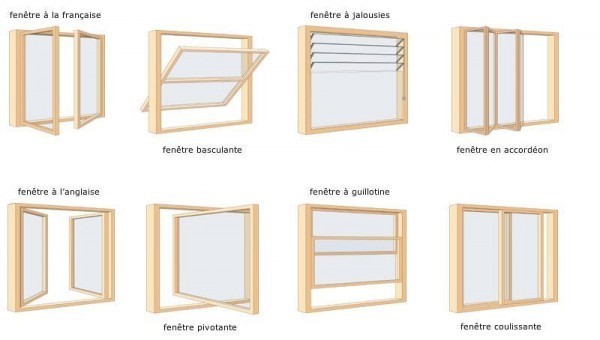
Envelope in detail
Roof
The roof is the surface or roof covering the upper part of a building, mainly to protect the interior against weather and humidity. Thanks to our facade engineers who know how to perform a thermal balance and a BlowerDoor test, you can reduce the energy consumption of your building. They will make all the observations and analyses necessary to improve the energy performance of your building.
Of a basic form, the roof can be classified according to the type of substructure that will support the cover:
- Concrete
- Steel
- Wood
The developments in the field of glass currently allow to use of this material as a primary structure for buildings of high standing.
The skylights are light elements that are integrated into the roof and provide natural and zenith lighting for industrial and commercial buildings. They can, by crumbling, ensure the ventilation of all types of buildings and by opening 90 °, ensure access to the roof and the function of smoke evacuation outlet.
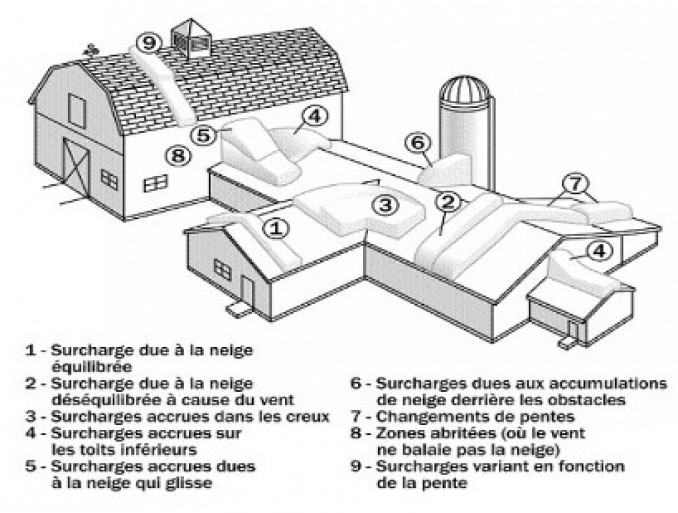
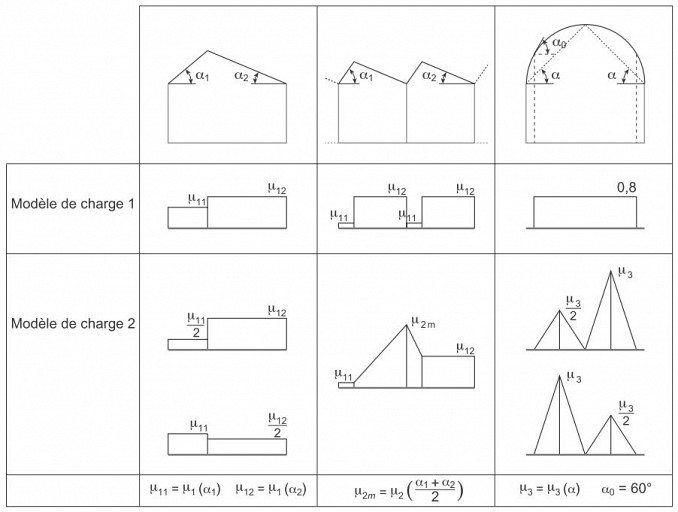
Envelope in detail
Solar protection
The solar radiation that reaches a glass surface is reflected, transmitted and absorbed in varying proportions depending on the type of the glazing. Only one of these three qualities can be sought (this is the case of office buildings that seek to reduce the light transmission), but depending on the case, it is also possible to maintain a certain harmony between these three factors thanks to the facade engineering. Our findings and analyses will enable an energy audit and a BlowerDoor test to improve the building's performance.
The solar factor g or energy transmission represents the proportion of the energy flux that the glazing (combined or not with a blind) passes, which is expressed as a percentage of the received radiation, which is called solar factor g. It represents the sum of the transmitted energy radiation and that of the absorbed radiation then retransmitted inwards by the glazing.
If solar protection glasses are used, the g values range from approx. 40% for the lightest at approx. 15% for the most successful. The use of electrochromic dynamic sunscreen offers flexibility of the value g of approx. 40% to approx. 5% with the same glass.
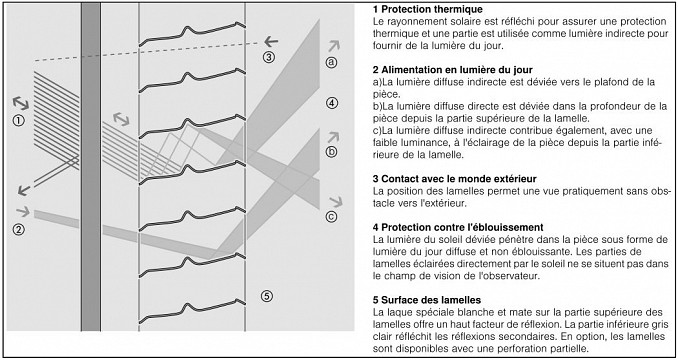
Envelope in detail
Protection and balustrade
A balustrade is a set of elements forming a protective barrier placed on the sides of the various building elements to prevent an accidental fall. Its composition may vary, but generally its construction means that it cannot be climbed easily or that a child cannot slip between its components.
The SIA 358 standard precisely describes the safety conditions applicable to this protection element. The BPA (Bureau of accident prevention) offers a technical sheet describing in graphic form the points to be respected.
There are several types of balustrades depending on the materials, but it is important to remember that they do not always appear as independent elements. In the particular case of light glass facades, very often, glass must act as a balustrade while respecting all the requirements.
Normally, it is essential to learn about the design and allowable overloads depending on the country and type of building and assignment.
Our glass specialist engineer can help you to obtain a homologation of your own glass balustrade system for Swiss or European use. He accompanies you throughout the process. From conception to finalization.
Our facade engineers can also conduct an energy audit and a BlowerDoor test to improve the energy performance of your building. Findings and analyses can help you reduce your energy consumption.
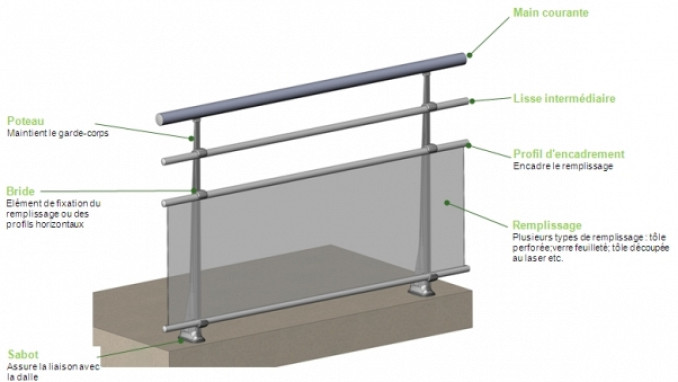
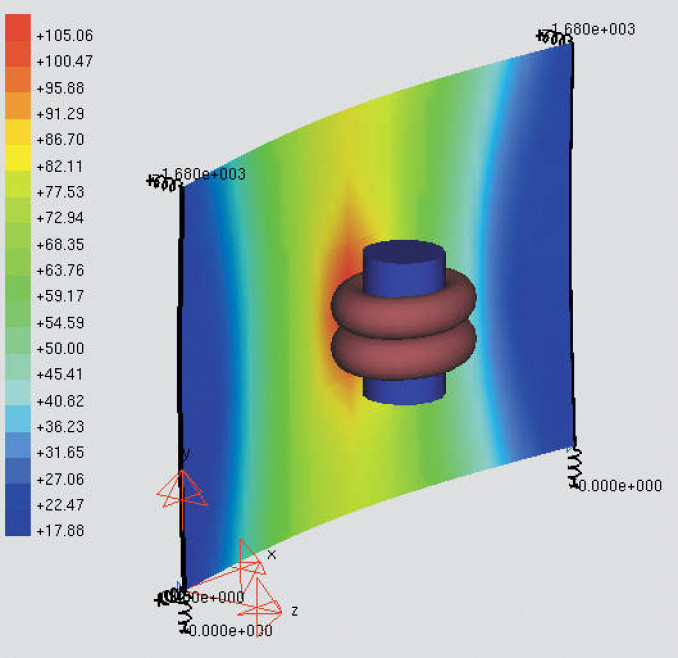
Simulation du test du pendule avec un programme de statique
Envelope in detail
Energy
Where does "disappear" energy?
It is estimated that 50 to 75% of a building's heat loss is at the envelope level. The diagram below shows for a typical individual house, the various uses that represent, according to the parts, the total consumption of energy (100% corresponds to the totality of the energy supply for heating, hot water and electricity). The energy consumption index of a building for heating is a good indicator to quickly locate the level of insulation and energy quality of the envelope. The energy consumption index can be obtained by entering your data in the calculator of the website of the Cantonal Energy and Environment Services.
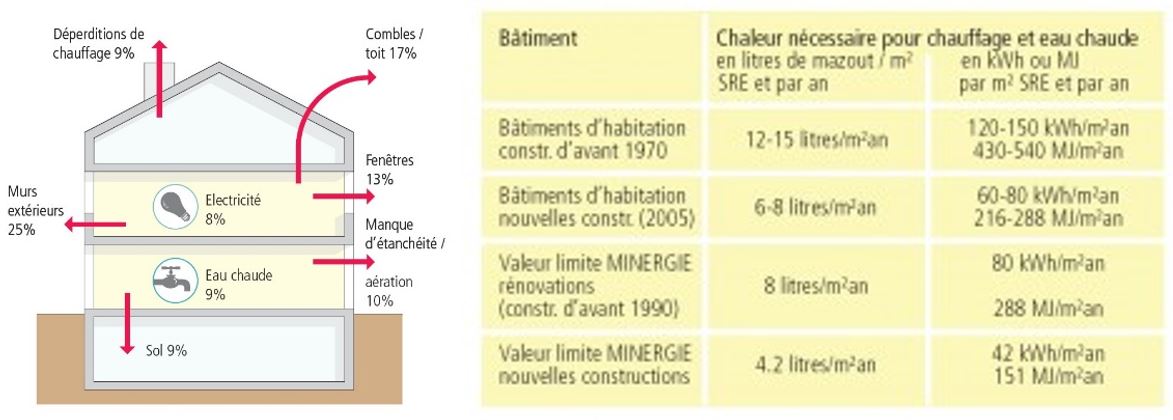
HEAT TRANSFERS
The heat transfer at the level of the envelope of the buildings is mainly by conduction in the immobile matter, by convection in the fluids, by radiation in the transparent medium and by evaporation-condensation of water vapor.
Conduction
This mode of heat transfer is caused by a temperature difference between two points of the same medium. The absence of material displacement is its main characteristic. The heat is transmitted by thermal agitation of the atoms which give up their kinetic energy to the neighbouring atoms.
Convection
It is estimated that air leaks resulting from airtightness of the shell components are responsible for high energy costs during the heating and cooling season.
Radiance
Radiation is responsible for two-thirds of heat loss through a standard window. The radiative thermal energy transmission at the windows has been considerably reduced by the application of a low-emissivity layer. This thin layer of invisible metal oxide applied directly to the glass surface provides a significant advantage in winter by allowing the heat energy of the sun to enter the living space while reflecting the heat generated inside in the living space.
THERMAL INSULATION / PERFORMANCE
The U value is the heat transfer coefficient which indicates the heat loss expressed in Watt per square meter of a building element for a temperature difference of one degree Kelvin, per unit of time. (W/m2K). A small U value is therefore a sign of low heat loss and effective thermal protection.
The heat need for heating for one year is calculated by accounting the heat loss by transmission and air renewal and then deducting the internal and solar heat input calculated according to hours of heating per year. The simulation of the thermal balance makes it possible to determine the probable consumption of a project. Whether at the project level or at the rehabilitation stage, the thermal balance makes it possible to quantify the energy consumption of different variants.
We speak of thermal bridges as soon as there is discontinuity between insulating materials and structural walls. They represent a loss of heat that will be carried out by conduction between two components of the frame.
However, a distinction is made between geometric thermal bridges, which occur at any point of curvature in the insulating layer or in the wall such as angles and corners, and material thermal bridges, which are found at any place where the insulating layer is interrupted or traversed by a more conductive material. Thermal bridges are usually classified into two categories:
- Linear: they have a certain length (interlayer of windows, foot of slab)
- Punctual: they are usually present at the level of fastening systems that interrupt the insulating layer (mullion, screw, ...)
To overcome the energy problems of a building, facade engineering allows a thermal balance and a BlowerDoor test to reduce energy consumption. Our engineers draw up observations and analyses to improve the building's performance.

© 2025 BIFF SA - Web & design by WGR
